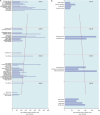The global burden of stroke and need for a continuum of care
- PMID: 23319486
- PMCID: PMC12443346
- DOI: 10.1212/WNL.0b013e3182762397
The global burden of stroke and need for a continuum of care
Abstract
Until 4 decades ago, the rates of stroke in low- and middle-income countries were considerably lower than those in more economically robust countries. In the intervening years, however, the rates of stroke in places such as southern India and rural South Africa have approximately doubled, whereas stroke rates in more economically developed nations have decreased. What is far more striking is that rates of disability and mortality arising from stroke are at least 10 times greater in medically underserved regions of the world compared with the most developed nations. The causes of these disparities are clear: above all, there is a lack of primary care treatment to screen patients for stroke risk and to mitigate risk factors. In addition, the lack of access to common drugs and basic medical equipment, as well as the lack of poststroke follow-up programs, rehabilitation, and secondary stroke prevention, means that individuals who would, in countries with better medical care, likely recover from stroke, instead have high rates of death and disability. Several global organizations, most notably the World Health Organization, have formulated and begun to implement public health programs to address these underserved regions. Their success depends on the support and expansion of these efforts so that short-term response to stroke, long-term stroke prevention and care, and screening and treatment of poststroke disabilities can be improved in underserved regions and the human and economic burden on these populations can be minimized.
Figures


References
-
- Lundström E, Smits A, Borg J, Terént A. Four-fold increase in direct costs of stroke survivors with spasticity compared with stroke survivors without spasticity: the first year after the event. Stroke 2010;41:319–324. - PubMed
-
- WeMove.org. Understanding spasticity. Available at: http://www.wemove.org/survey/WEMOVE_Spasticity_Research_Report_6_2009.pdf. Accessed January 15, 2012.
-
- World Health Organization. The global burden of disease: 2004 update. Available at: http://www.who.int/healthinfo/global_burden_disease/2004_report_update/e.... Accessed January 15, 2012.
-
- Radensky PW, Archer JW, Dournaux SF, O’Brien CF. The estimated cost of managing focal spasticity: a physician practice patterns survey. Neurorehabil Neural Repair 2001;15:57–68. - PubMed
Publication types
MeSH terms
Grants and funding
LinkOut - more resources
Full Text Sources
Other Literature Sources
Medical
